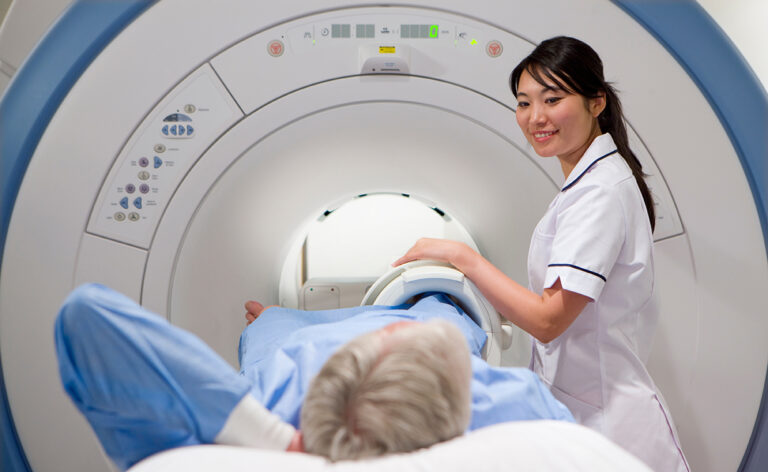In the realm of medical imaging, Magnetic Resonance Imaging (MRI) stands out as a powerful diagnostic tool offering numerous benefits Lead glass supplier. This objective and evidence-based article explores the advantages of MRI, emphasizing its enhanced diagnostic accuracy, early disease detection, non-invasive nature, and ability to provide detailed visualization of soft tissues.
Experts in medical imaging will appreciate the technical precision and comprehensive explanation of MRI technology and its applications. Supported by reputable sources and scientific studies, this article presents factual information on the undeniable benefits of MRI.

Enhanced Diagnostic Accuracy
Enhanced diagnostic accuracy is a key advantage of utilizing MRI technology in medical imaging. MRI, or magnetic resonance imaging, uses a powerful magnetic field and radio waves to create detailed images of the body’s internal structures. This technology allows for the detection and diagnosis of a wide range of conditions X ray warning light, including tumors, infections, and abnormalities in the brain, spine, and joints.
By providing high-resolution images, MRI enables healthcare professionals to accurately identify and characterize various diseases and conditions. This increased accuracy leads to improved patient outcomes as it allows for more precise treatment planning and monitoring. Additionally, MRI is a cost-effective diagnostic tool in the long run. Although the initial investment in MRI equipment may be significant, it eliminates the need for multiple tests and procedures, reducing overall healthcare costs.
Numerous studies have demonstrated the benefits of MRI in improving diagnostic accuracy and patient care. These findings support the use of MRI as a valuable tool in medical imaging, providing healthcare professionals with the information they need to make informed decisions and provide optimal care for their patients.
Early Detection of Diseases
One of the significant advantages of using magnetic resonance imaging (MRI) is its ability to detect diseases at an early stage. Early detection plays a crucial role in providing timely and effective treatment, leading to improved patient outcomes.
MRI utilizes a powerful magnetic field and radio waves to create detailed images of the body’s internal structures. It is particularly useful in identifying abnormalities in soft tissues, such as the brain, spinal cord, and organs.
By detecting diseases early, MRI enables healthcare professionals to intervene promptly, potentially preventing the progression of the disease and reducing the need for invasive procedures. Numerous studies have shown the benefits of early intervention facilitated by MRI, including improved survival rates for cancer patients and better management of chronic conditions.
MRI’s ability to provide accurate and detailed images aids in the early diagnosis and treatment planning, ultimately leading to improved patient outcomes.
Non-Invasive and Painless Procedure
Non-invasive and painless, magnetic resonance imaging (MRI) offers a safe and effective method for diagnosing and monitoring various medical conditions. MRI utilizes strong magnetic fields and radio waves to generate detailed images of the body’s internal structures. This imaging technique provides valuable information that aids in the accurate diagnosis of diseases and conditions, allowing for timely and appropriate treatment.
One of the key benefits of MRI is its ability to ensure patient comfort during the procedure. Unlike invasive procedures such as biopsies or surgeries, MRI does not involve any incisions or needles, minimizing patient discomfort and anxiety. Additionally, MRI is non-radioactive, eliminating any potential risks associated with radiation exposure.
Furthermore, MRI enables efficient diagnosis by providing high-resolution images that allow for precise evaluation of tissues and organs. This technology can detect abnormalities that may not be visible with other imaging modalities, facilitating early detection and intervention. This leads to improved patient outcomes and can potentially prevent the progression of diseases.

Detailed Visualization of Soft Tissues
The detailed visualization of soft tissues provided by magnetic resonance imaging (MRI) allows for accurate diagnosis and monitoring of various medical conditions. MRI utilizes a powerful magnetic field and radio waves to create detailed images of the body’s internal structures. This imaging technique is particularly beneficial in the detection of tumors and the evaluation of joint injuries.
MRI’s ability to differentiate between healthy and abnormal tissues enables early identification and characterization of tumors, facilitating prompt treatment initiation. In the evaluation of joint injuries, MRI can provide crucial information about the extent of damage to ligaments, tendons, and cartilage, guiding appropriate treatment strategies.
Moreover, MRI is a non-invasive and painless procedure that does not involve the use of ionizing radiation, making it a safe choice for patients of all ages.
Overall, MRI’s detailed visualization of soft tissues plays a vital role in improving patient outcomes through accurate diagnosis and monitoring of medical conditions.
Customized Treatment Plans
Customized treatment plans are essential in providing optimal care to patients, as they consider individual factors such as medical history, lifestyle, and specific treatment goals.
In the realm of medical imaging, Magnetic Resonance Imaging (MRI) plays a crucial role in developing personalized treatment plans for patients. MRI is a non-invasive imaging technique that uses a strong magnetic field and radio waves to generate detailed images of the body’s internal structures. By providing high-resolution images of soft tissues, MRI enables healthcare professionals to accurately diagnose and monitor various conditions.
Additionally, MRI can be tailored to fit the specific needs of each patient, allowing for personalized medicine. This approach ensures that patients receive the most appropriate and effective treatment based on their unique circumstances.
The ability to customize treatment plans with the help of MRI contributes to improved patient care and outcomes in the field of medicine.
Conclusion
In conclusion, MRI offers enhanced diagnostic accuracy, early detection of diseases, a non-invasive and painless procedure, detailed visualization of soft tissues, and the ability to customize treatment plans.
These benefits are supported by scientific evidence and research studies, making MRI a valuable tool in medical imaging for precise diagnosis and effective treatment planning.
